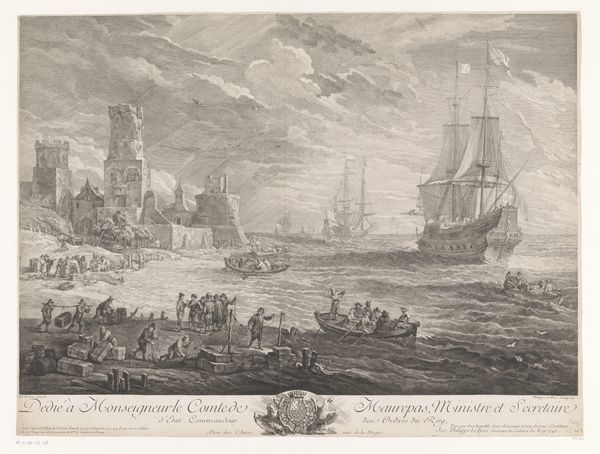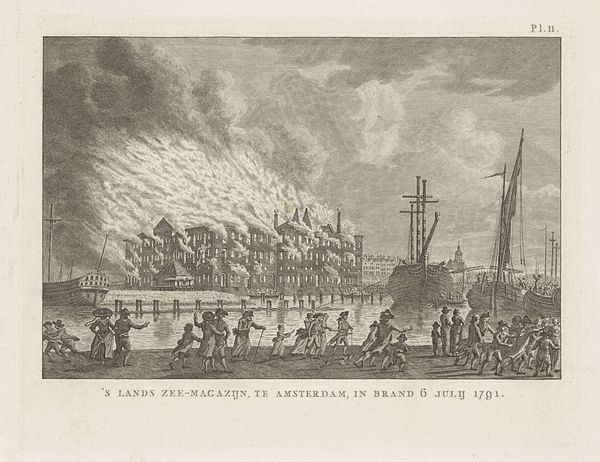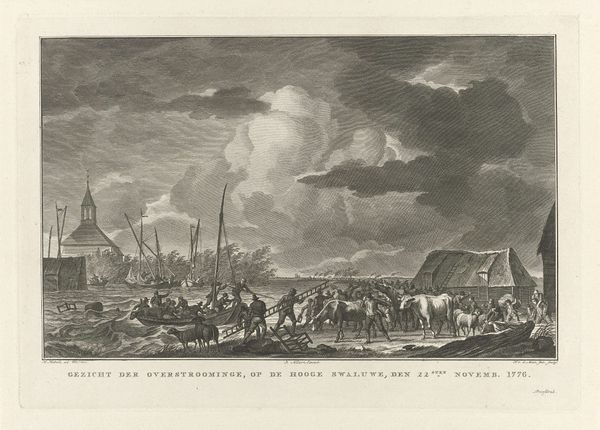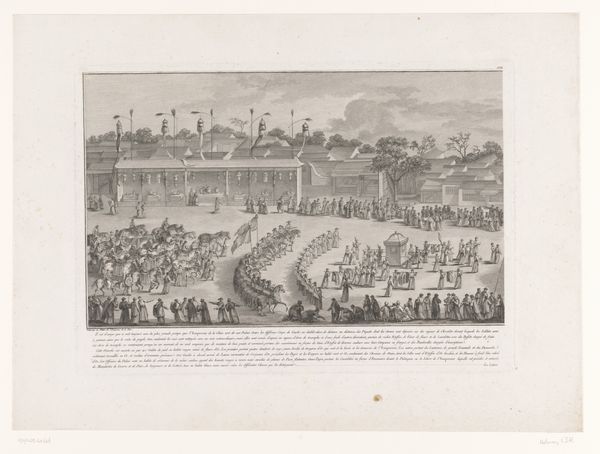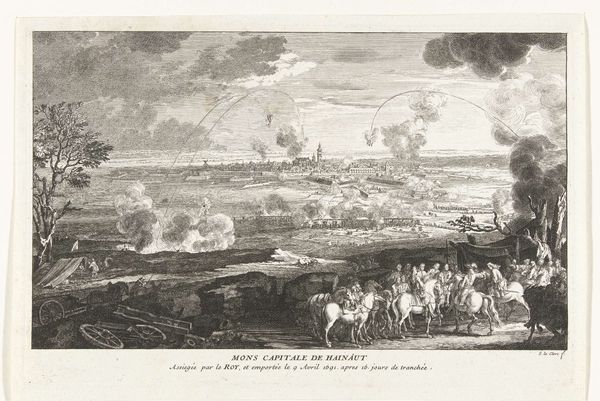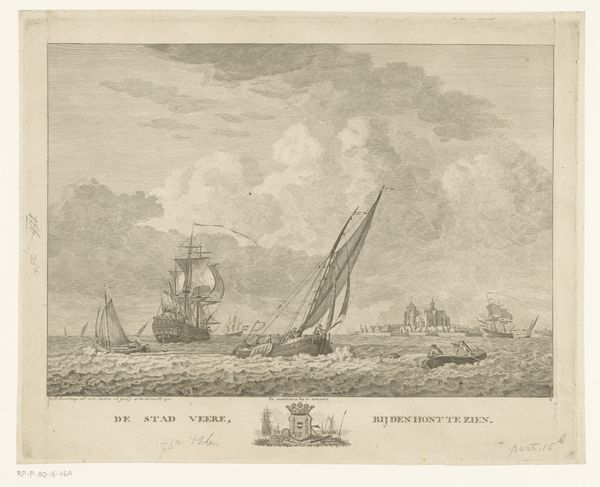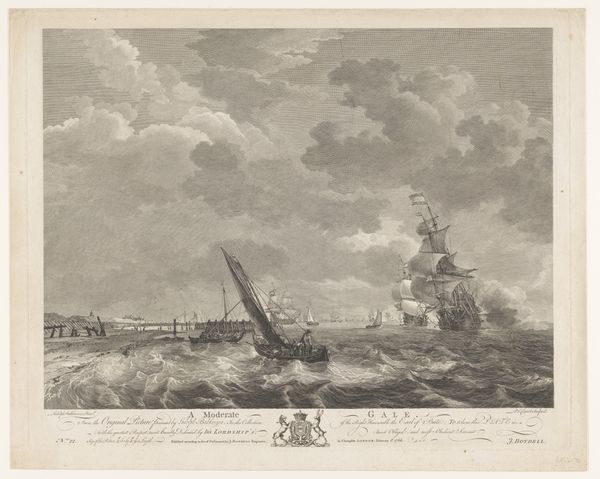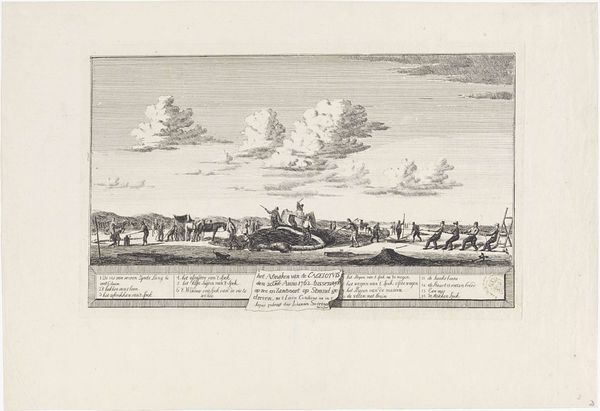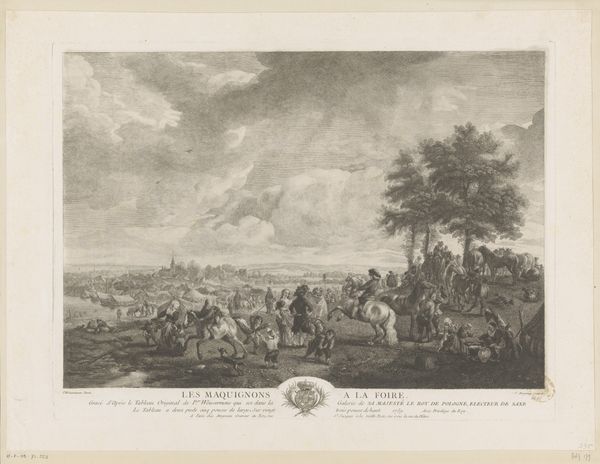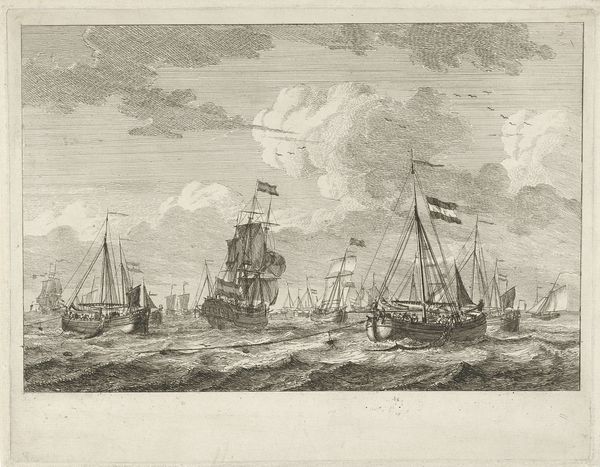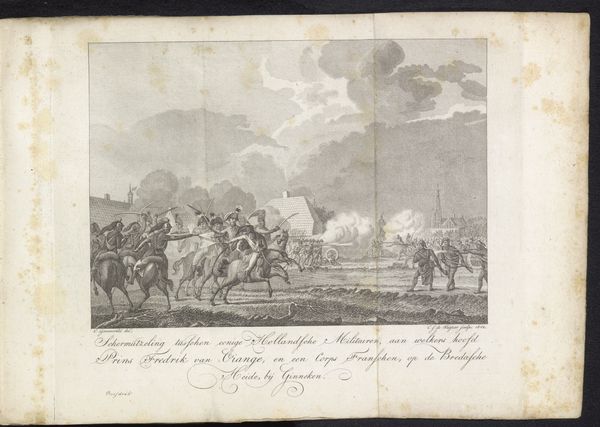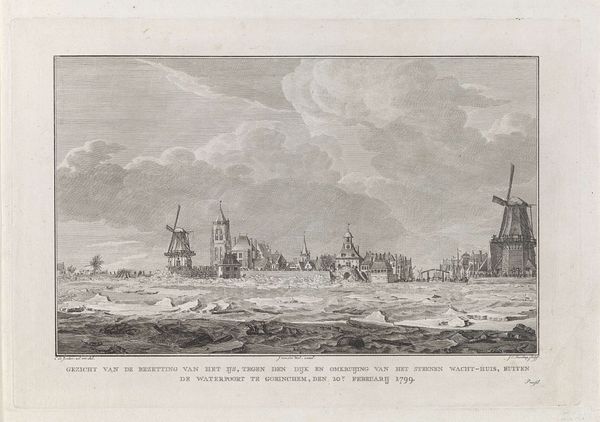
Fransen beschieten de vluchtende troepen op de Gierbrug, 1794 1803
0:00
0:00
cornelisbrouwer
Rijksmuseum
#
pencil drawn
#
aged paper
#
light pencil work
#
pencil sketch
#
old engraving style
#
personal sketchbook
#
sketchwork
#
sketchbook drawing
#
pencil work
#
sketchbook art
Dimensions: height 220 mm, width 305 mm
Copyright: Rijks Museum: Open Domain
Curator: This detailed drawing, titled "Fransen beschieten de vluchtende troepen op de Gierbrug, 1794", captures a moment of intense conflict. Created around 1803 by Cornelis Brouwer, it's currently housed in the Rijksmuseum. It is created with pencil on paper. Editor: My first impression is that it feels… overwhelming. A chaotic scene. The sharp lines of the pencil amplify a sense of urgency. There are so many tiny figures. Curator: That feeling of being overwhelmed mirrors the historical context. We see the French army targeting fleeing troops on the Gierbrug bridge. Consider the revolution still ongoing. What did this mean to those sketched, those escaping or pursuing? Editor: Yes, look how the artist uses contrasting scales. Figures in the foreground, especially the horses, are given detail, as are the attacking forces below. They become symbols of immediate threat and of resistance. Their presence overshadows the receding, faceless figures representing generalized retreat and defeat. Curator: Exactly. The very act of depicting this scene normalizes the political ideology the work presents: this kind of violence is not happening to anyone individual; it just IS. In looking, we must ask ourselves as to whether we ourselves take on this attitude toward victims of political violence. Editor: What’s also remarkable is the linear nature of the piece. Look at how that line, the literal horizon line, separates land from sky—separating also the mundane lives of people who would call that town home, from the terror they surely felt as the army rolled in to dominate it. Curator: Perhaps there's a suggestion of inevitability, too? That the 'rampspoed', the disaster mentioned in the inscription, was already foretold, waiting to break. Editor: It's chilling to think about the lived experiences embedded in these faint pencil lines and consider their repetition throughout human history. Art, in all its forms, allows for such a remembrance of political trauma and resilience.
Comments
No comments
Be the first to comment and join the conversation on the ultimate creative platform.
